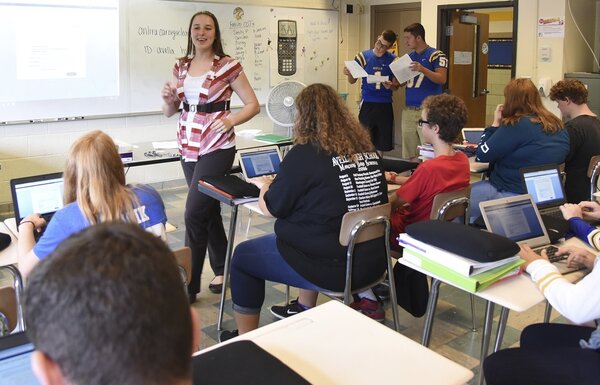
With all the divisive rhetoric, sensationalist journalism, and inflamed passions during this election cycle, schools can be one of our saving graces.
But only if teachers aren’t terrified about discussing elections.
Teachers recognize the need to discuss politics in order to prepare their students for their adult lives. But how can you do that without creating divisions within your classroom or introducing your own biases? Any false step, real or imagined, could lead to repercussions in the class, from parents and the administration.
Unsurprisingly, 40 percent of teachers are hesitant to teach about the election. And with that reluctance, it is no wonder that some college students feel unprepared to vote in elections.
That is why a friend and I, along with help from dozens of educators and mediation professionals ranging from the far left to the far right politically, launched AllSidesForSchools.org and its “Elections and Relationships” program and lesson plans.
Here is the basic idea.
As Thomas Jefferson said, “An educated citizenry is a vital requisite for our survival as a free people.”
We can’t know an issue, or be educated about it, if we can’t discuss it. To discuss controversial topics effectively, we need two things: our hearts and our minds.
Start with the heart. To have a healthy, productive discussion, we first need to have some kind of genuine human connection that makes it possible to truly listen to each other.
According to a recent study by Dan Kahan at Yale, people, especially bright people, more often get the math wrong when the right answer goes against their political beliefs. Jonathan Haidt explains the same phenomenon in his book, “The Righteous Mind, Why Good People are Divided by Politics and Religion.”
That’s why we start with a lesson plan called “Relationships First.”Following a structure perfected by Living Room Conversations, teachers guide students through a process where they discover more about themselves and each other. They also learn some ground rules and best practices for listening and talking with each other.
Next, focus on the mind. We need to learn about the topic and be sure to see all sides of it. If we only see one side, at best we will understand only half the story. At worst, we will discard the other side as something that can only be supported by dumb or evil people.
Students dig into a particular topic or issue using AllSides.com. The AllSides community and technology provide news and articles across the political spectrum for almost any topic or issue. While a search on Google delivers the most popular perspective or the one that best matches your profile, AllSides provides different viewpoints side by side.
This lets you discover much more about the topic and truly decide for yourself.
The soon-to-be released AllSides Dictionary takes on nearly 400 controversial terms from “abortion” to “Zionism.” This tool engages the heart and the mind as it describes how people across the political spectrum think and feel differently about the exact same words. It is a great tool for understanding and appreciating “those people” that are so different from us.
This commitment to different perspectives goes deep. Joan Blades, the progressive co-founder of MoveOn.org, joined me, a center right technologist who worked for President Bush and Republican Senators Mitch McConnell, Trent Lott and Howard Baker in 1980s, to launch this school program. Everything we produce has eyes from the left and right review it first.
We launched the Elections and Relationships program less than two months ago, and we are already in 29 states. Our approach has been to offer short lesson plans that can easily be integrated into school curriculums from middle school through college.
The ultimate impact?
We are giving students the skill set to discuss and evaluate controversial issues, and to appreciate and converse with people that are very different than them.
Social media, web site comments and Google do not provide any of those skills. They actually discourage open discussion and balanced review of issues by driving people into homogenous filter bubbles where all the content supports their prior beliefs, and all their friends are just like them.
So our next generation needs to more aware of the dangers of the polarized filter bubbles that our technology and online media create, and they need to be better prepared to break through those bubbles.
If anything, this election cycle is showing us the dangers of hyper-polarization, one-sided information and division. Our school program is giving students the tools to break through that and build a better tomorrow.
John Gable is founder and CEO of AllSides, a media technology company that helps you see, understand and discuss multiple perspectives. The crowd-driven technologies at AllSides.com provide bias ratings, news, issues, search and civil dialogs that reveal a wide variety of perspectives and build bridges between conflicting ideas and people.
